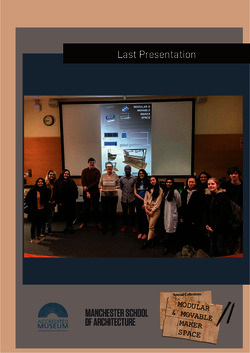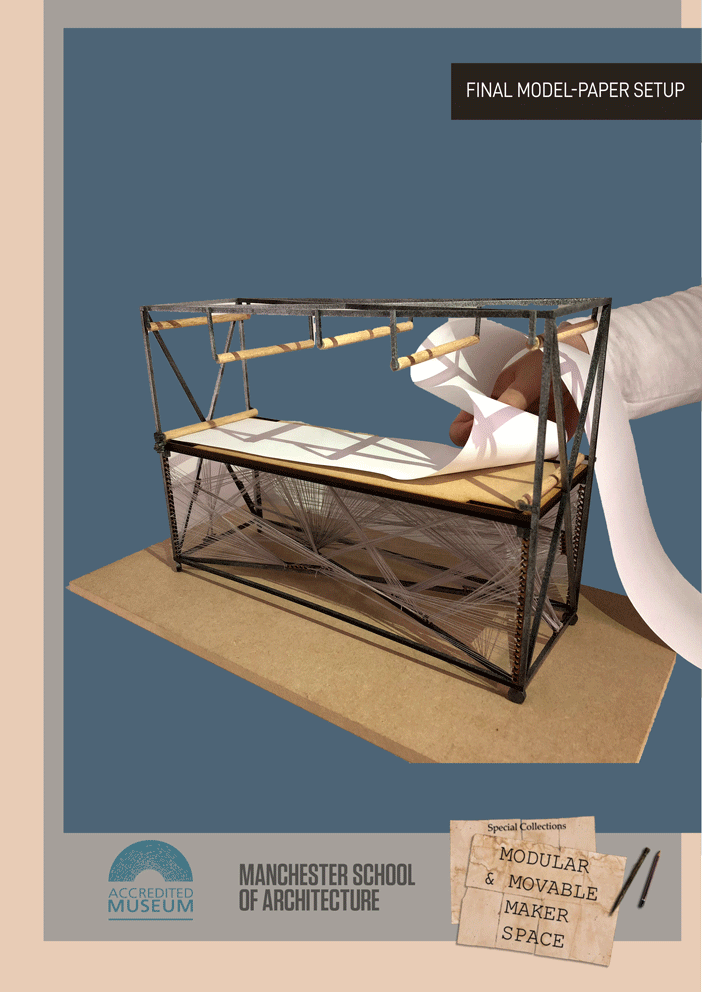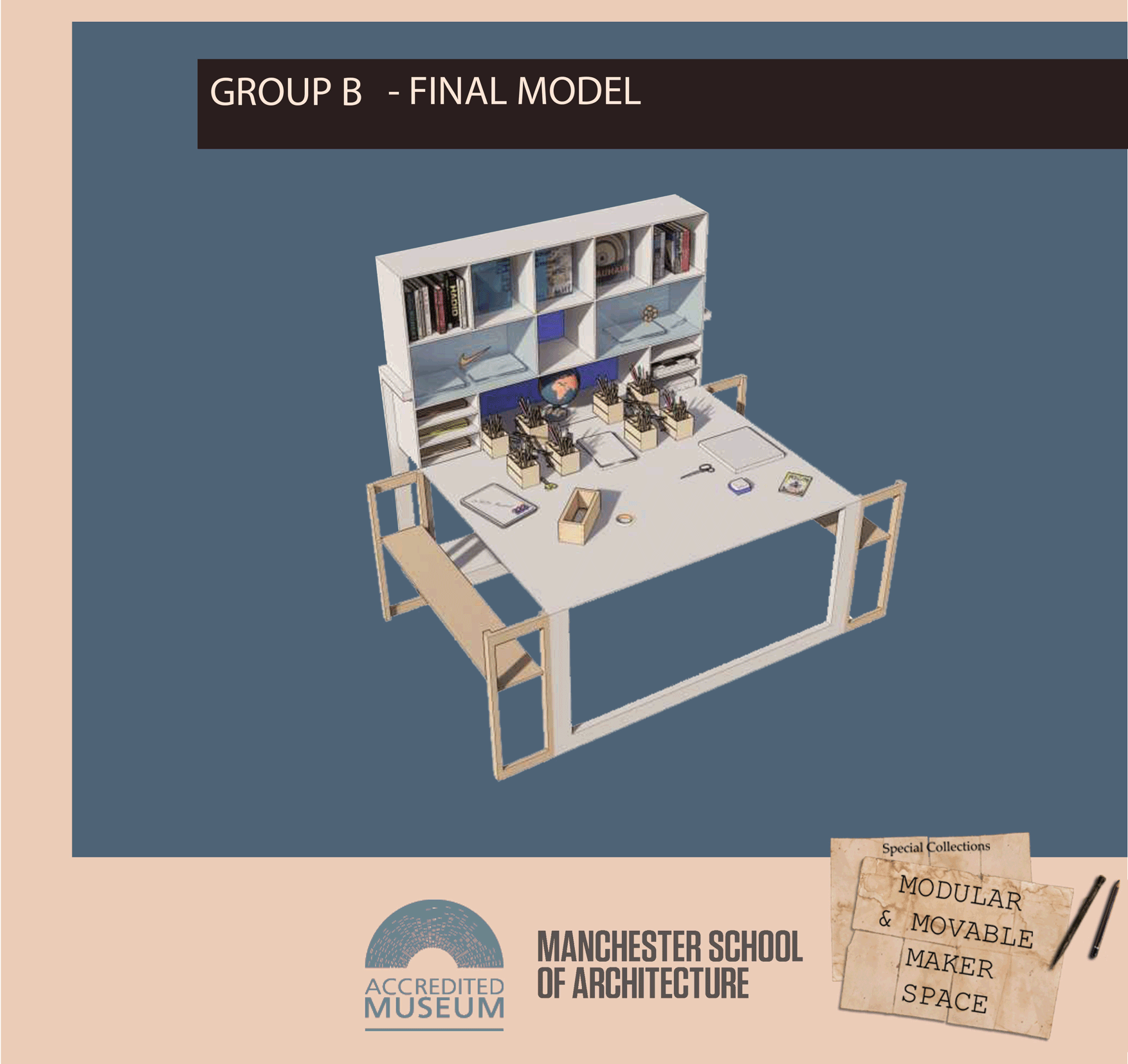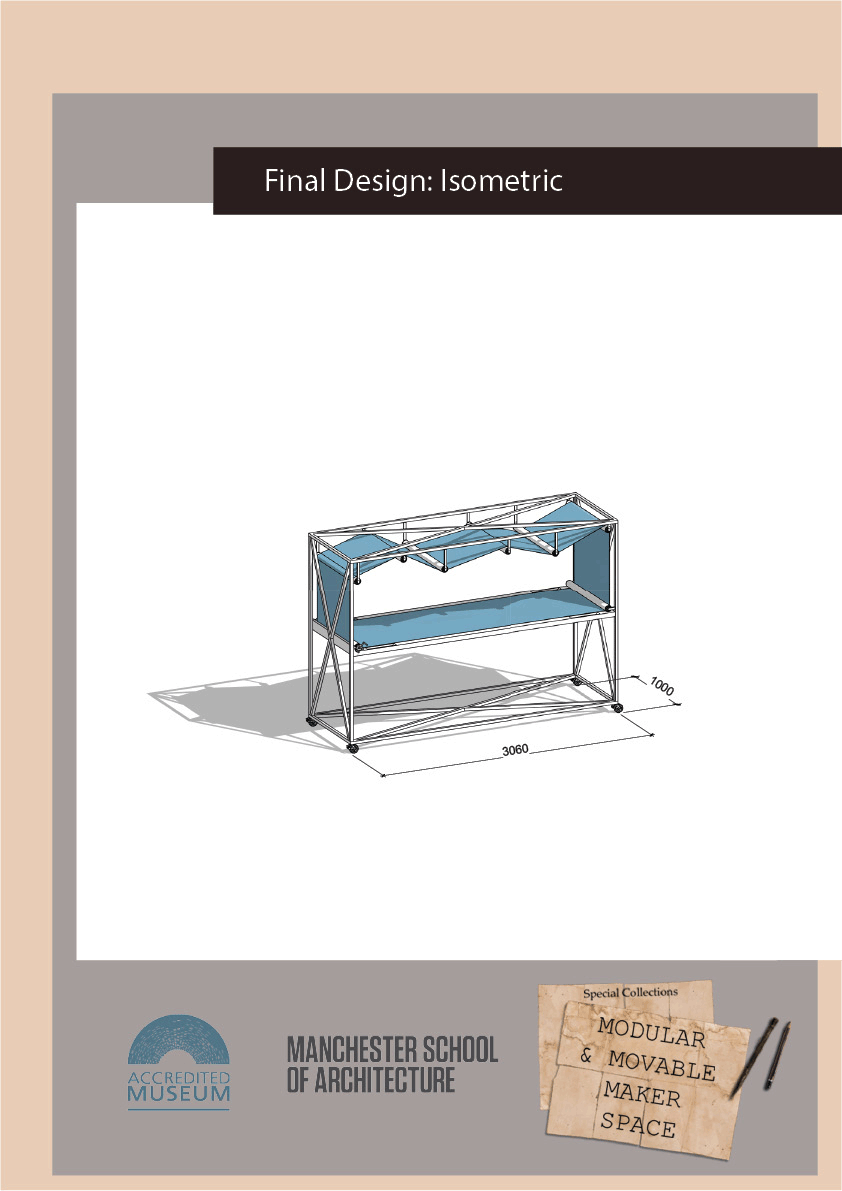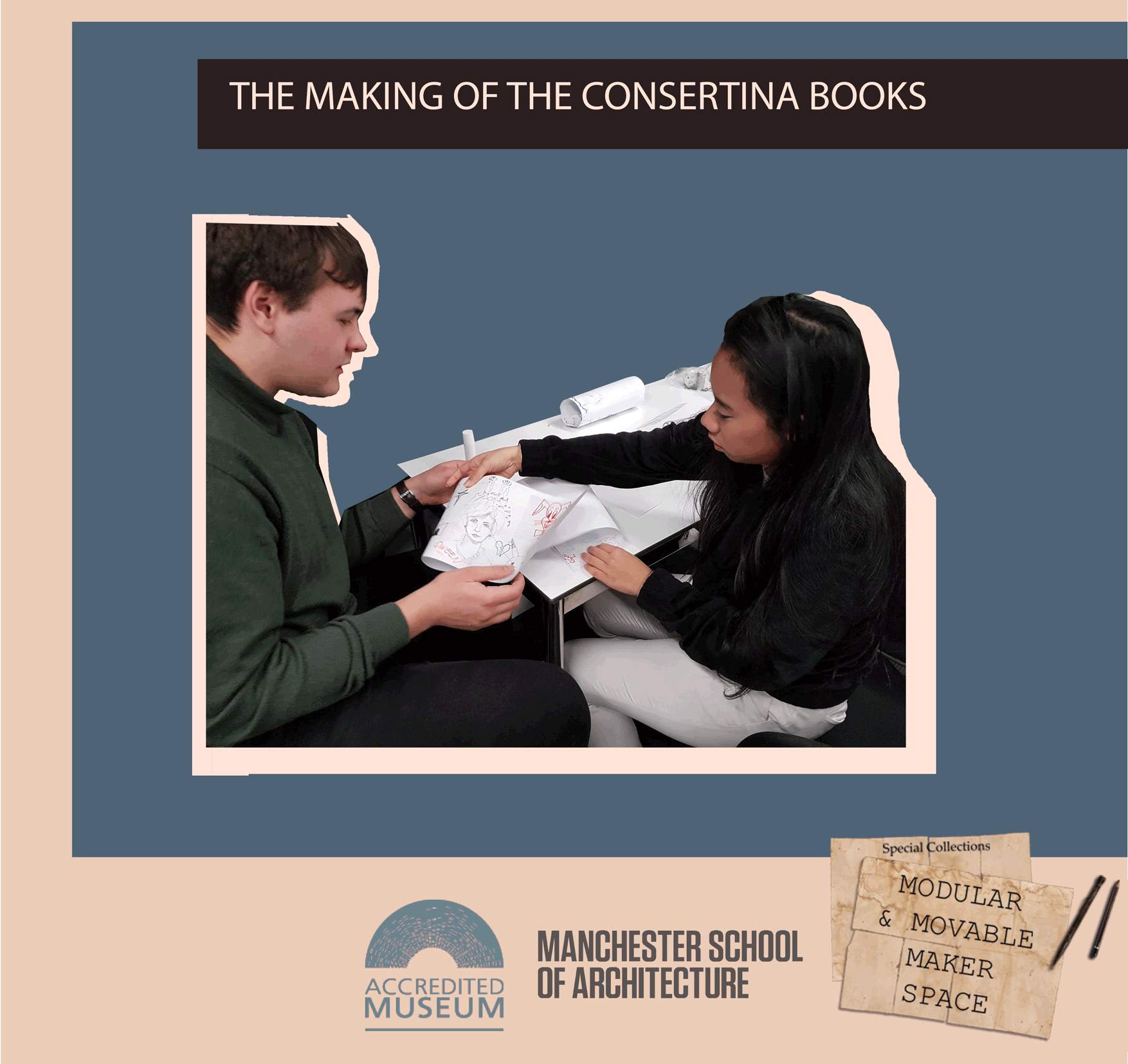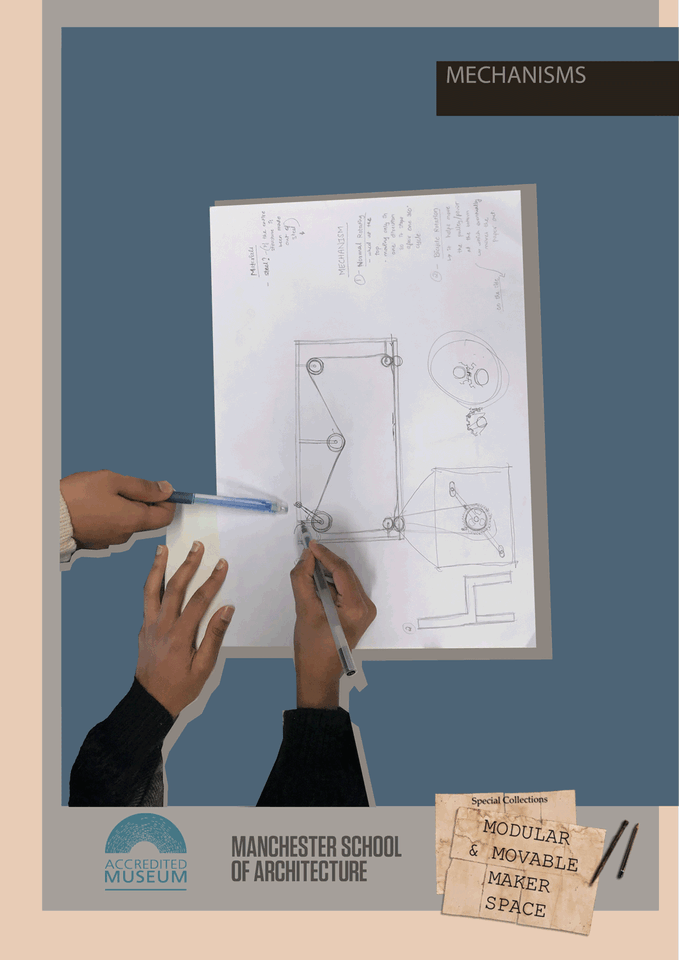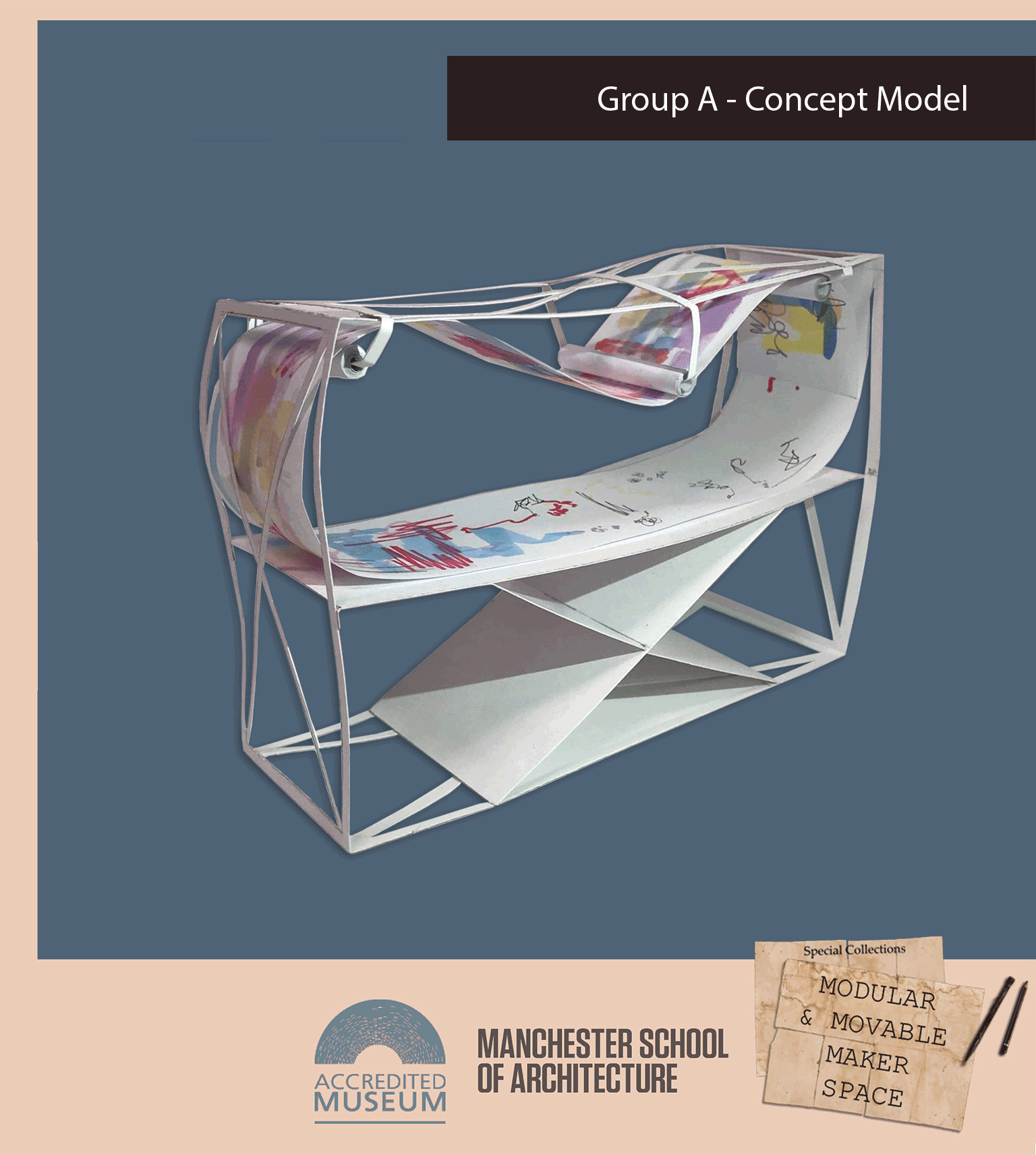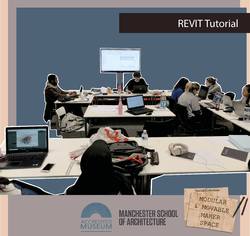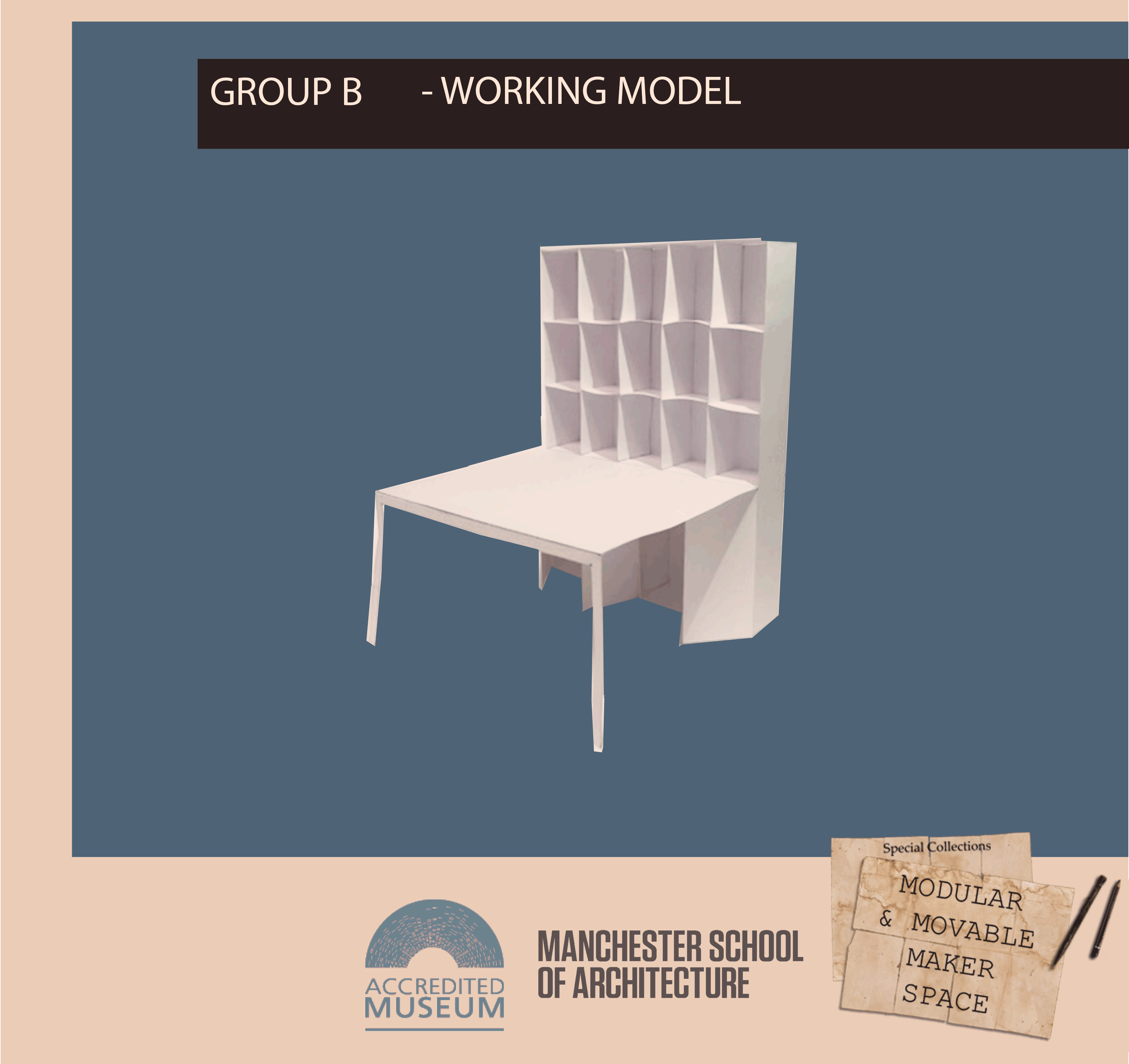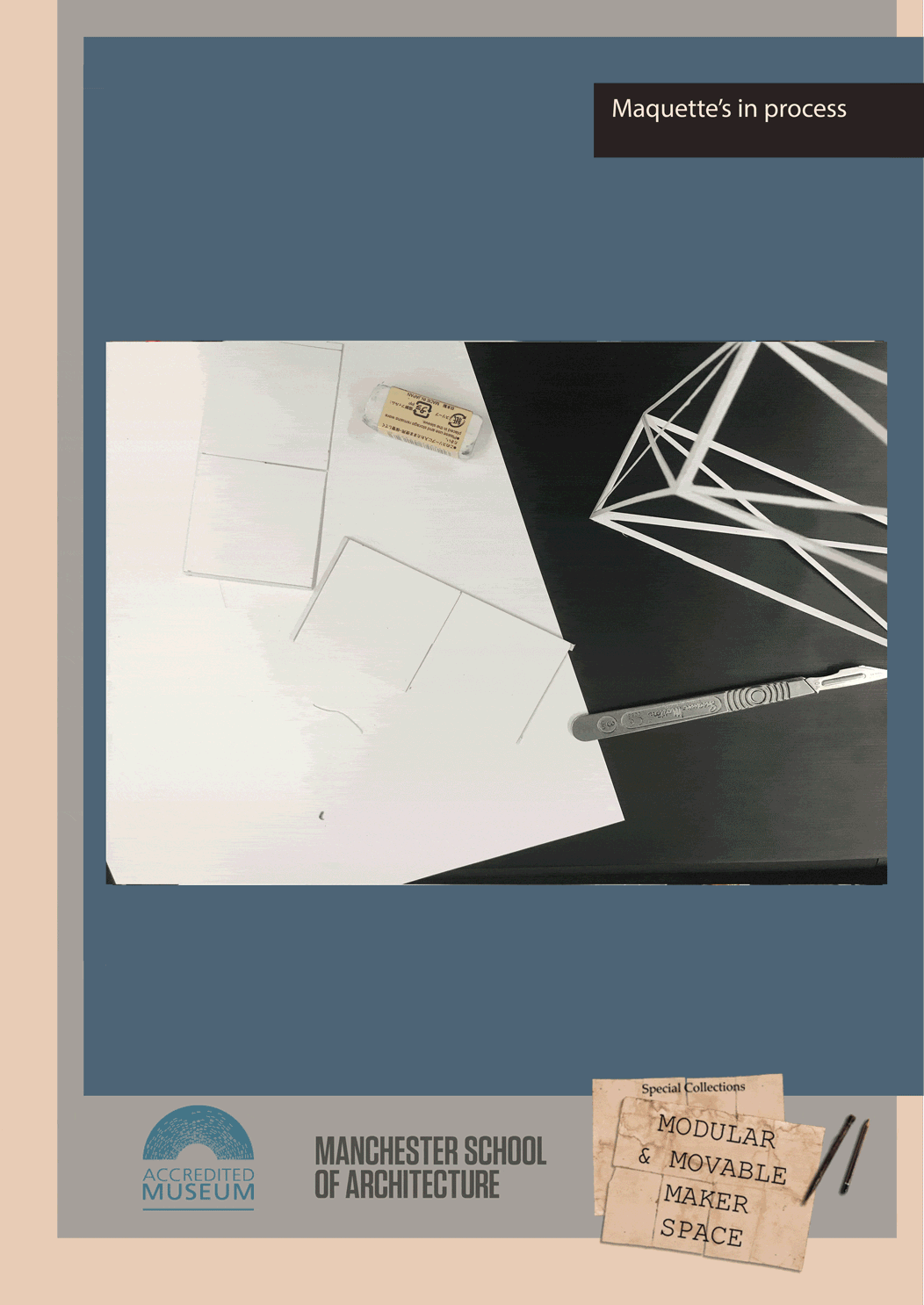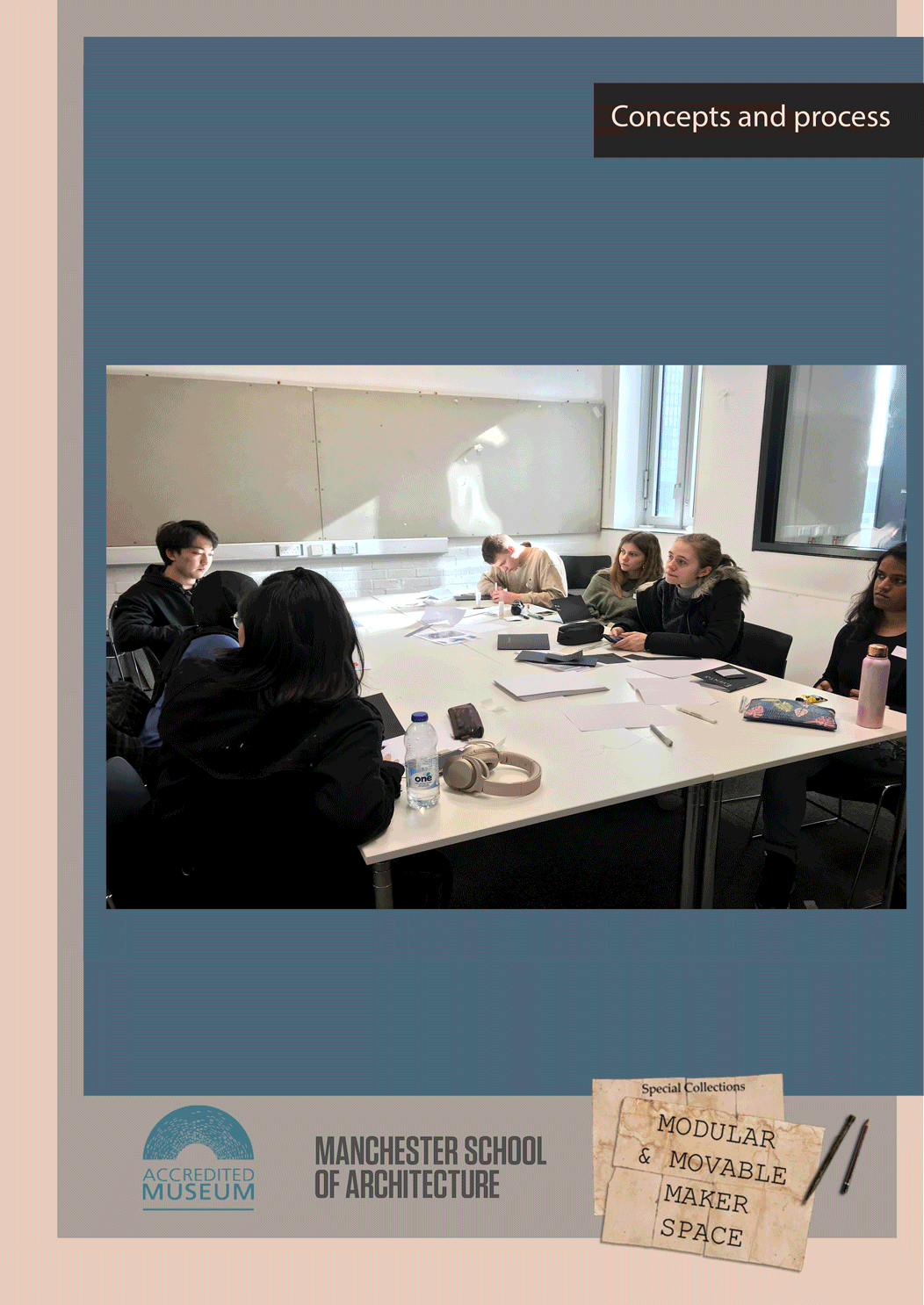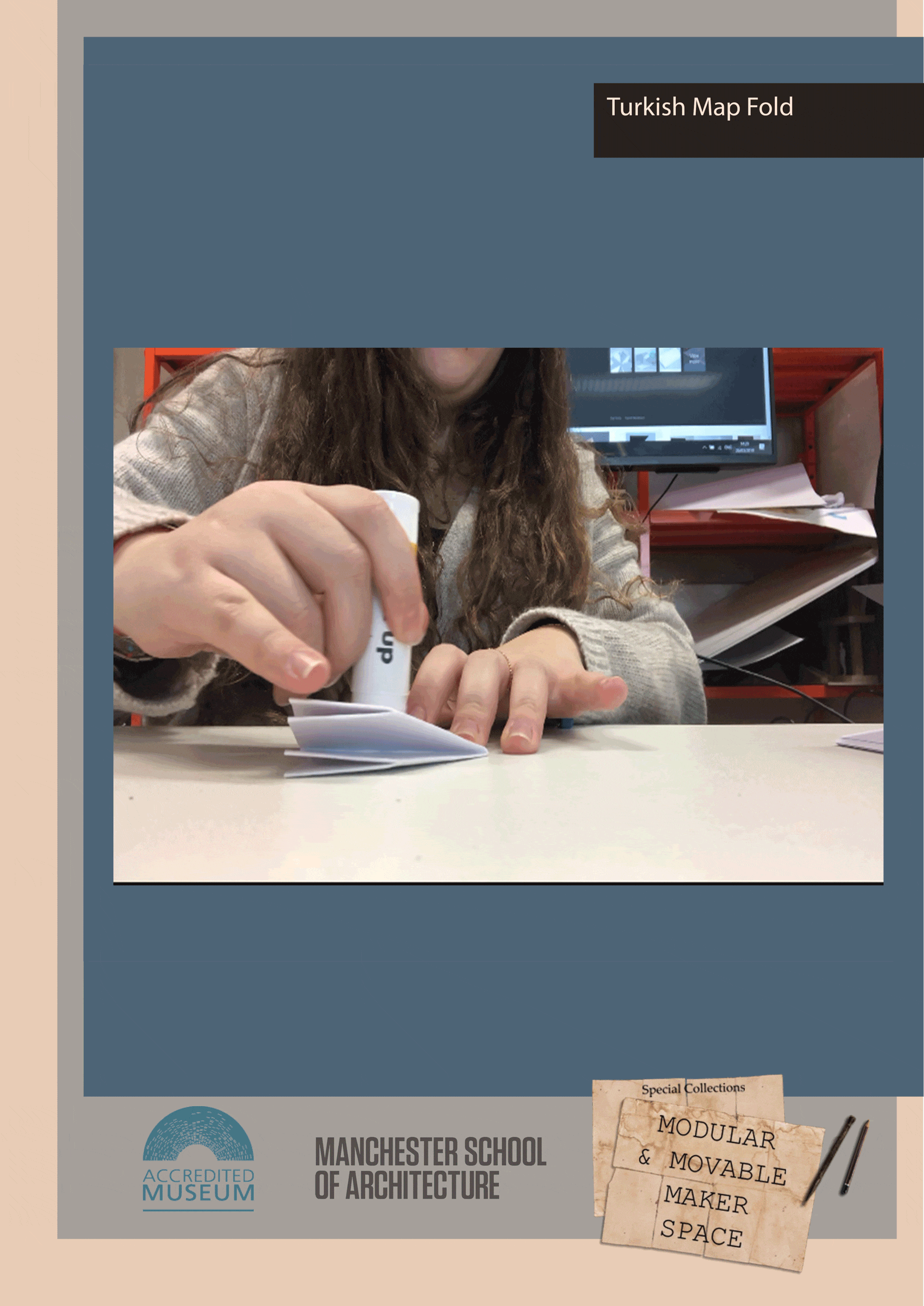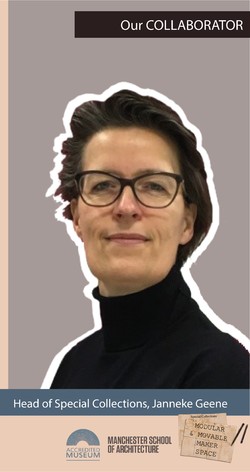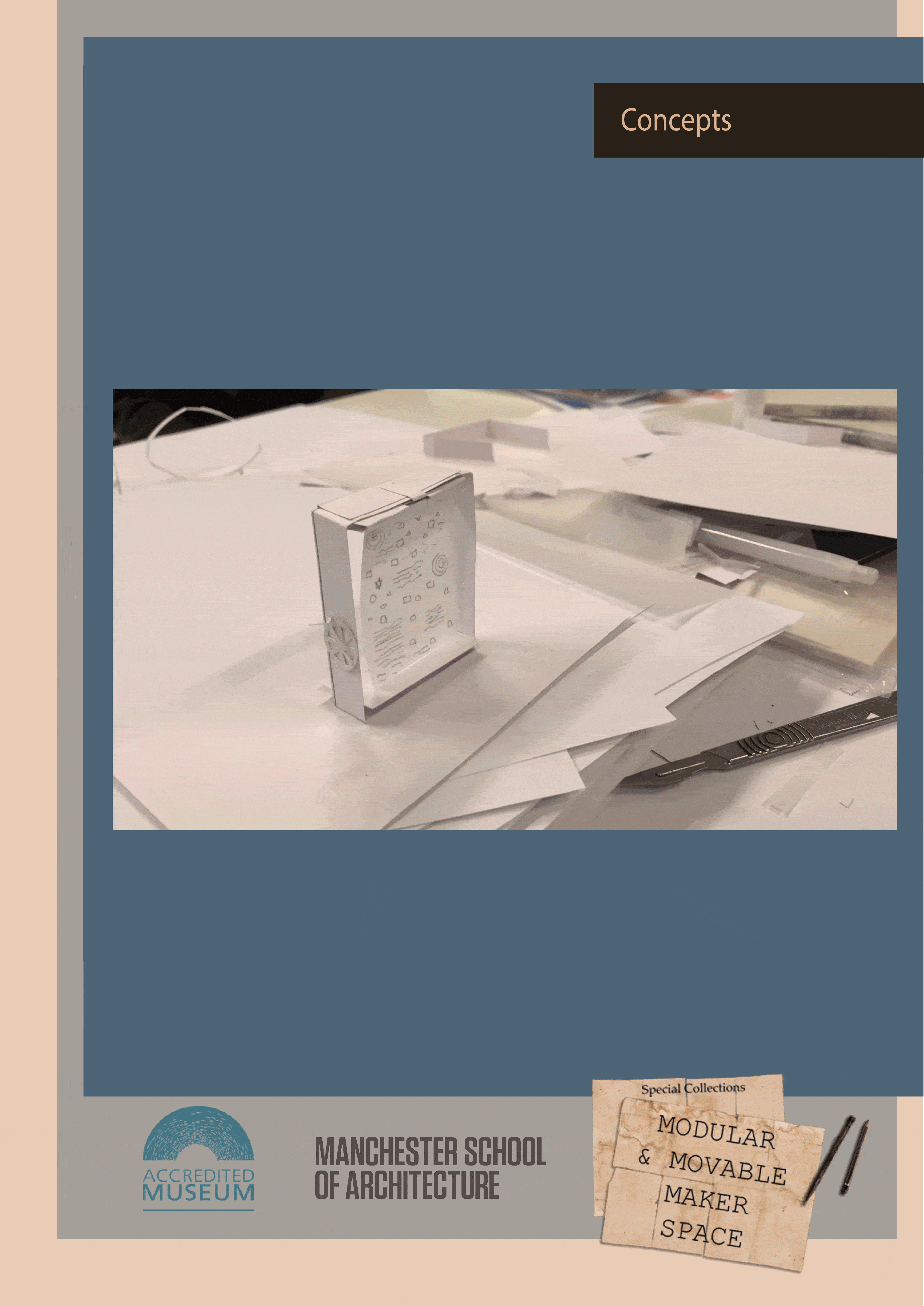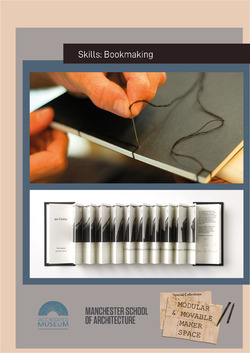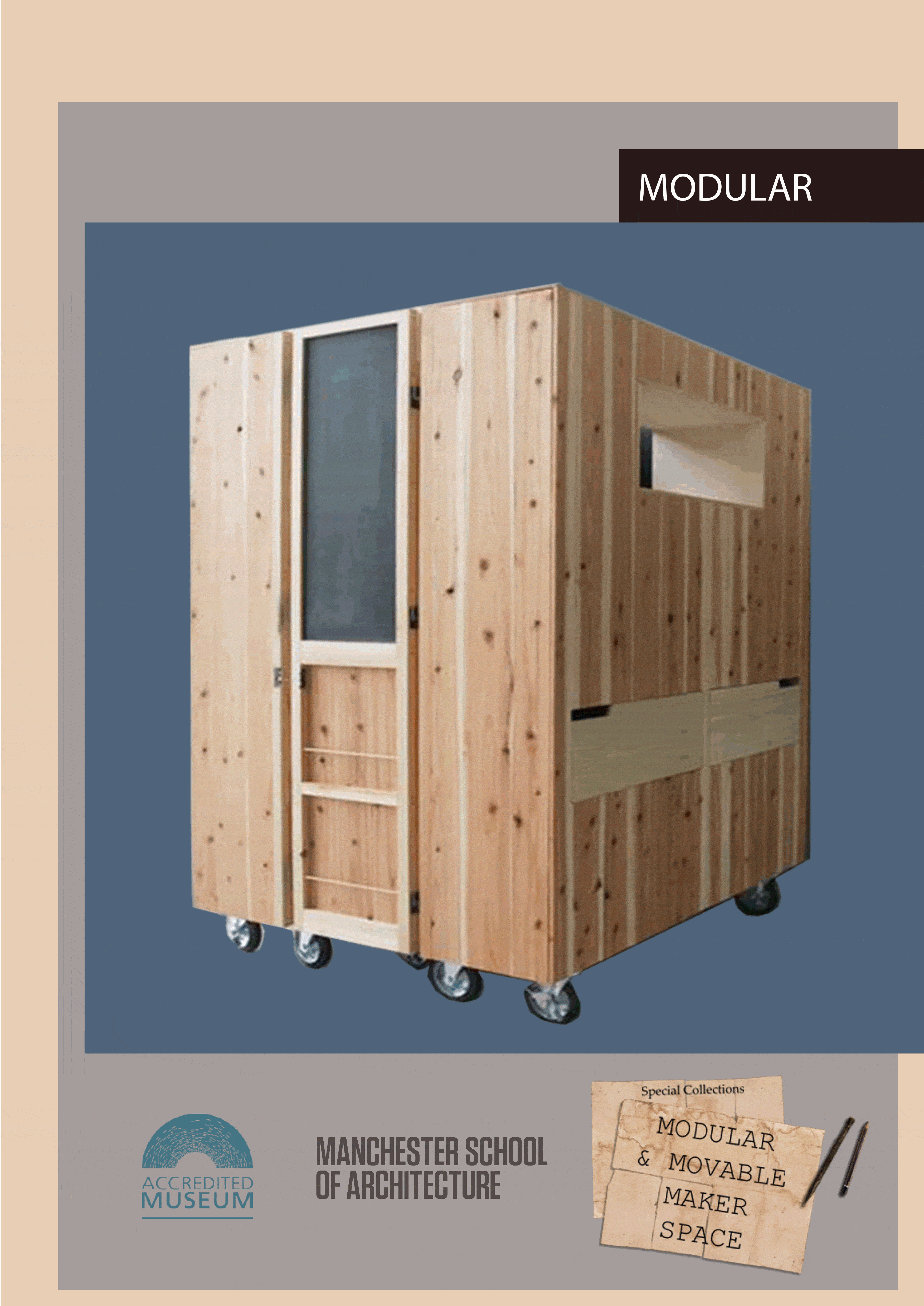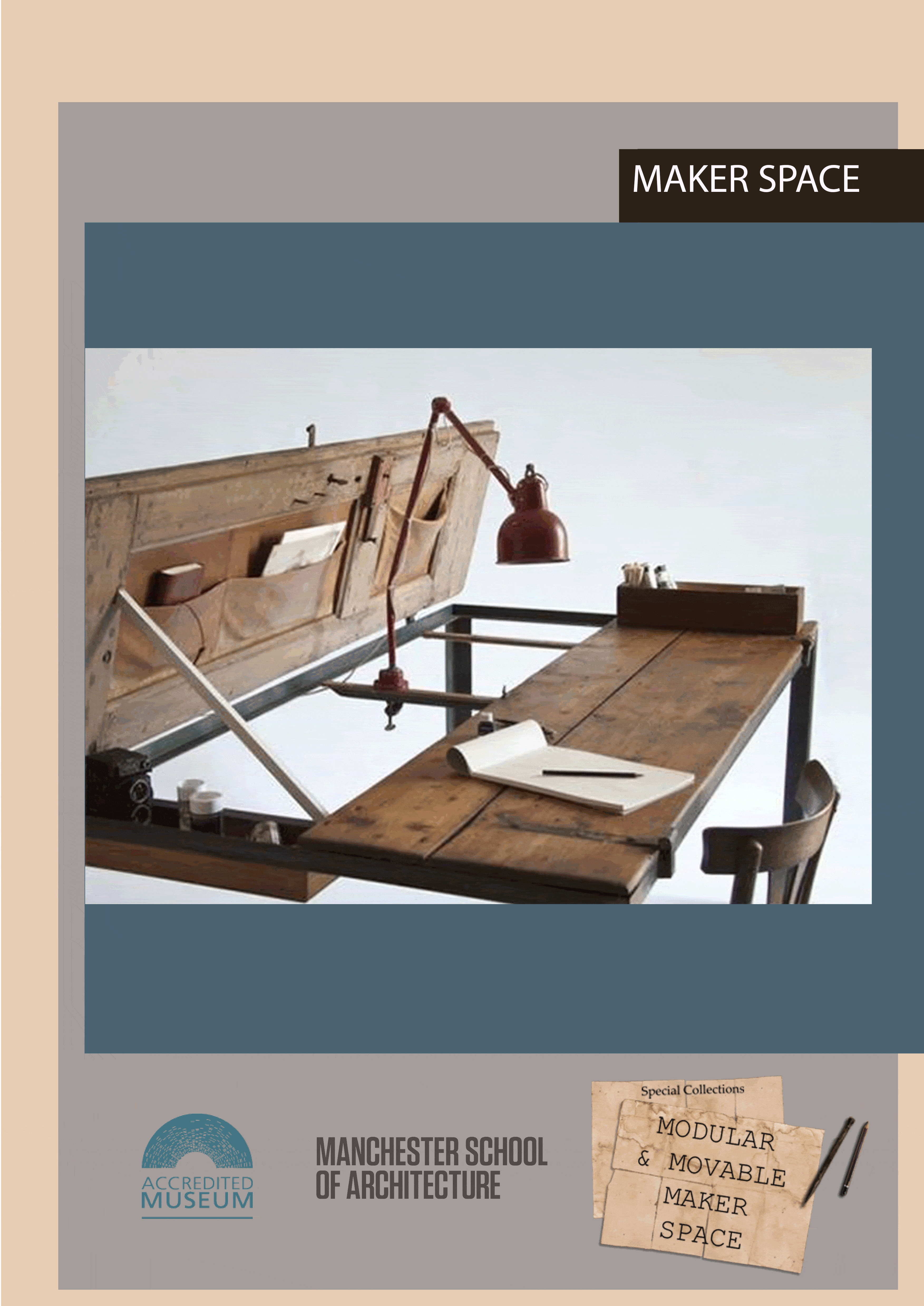Friday 05/04/2019
On our Last presentation with Janneke, We presented to the special collections team, our final output in the form of one 1:10 detailed scale model of the final scale model, 2 posters showing the final idea we went with and an alternative idea, along with a drawing package for both ideas
Posted 6 May 2019 13:18
Friday 05/04/2019
10:00
We had our final presentation with our client Janneke Geene, where Team A explained the Final design development. A drawing package was generated for the concept and was handed over to Janneke. We also created a poster, as seen above, presenting the idea, final design, details and pictures of the model. This can be further used as a brief for presenting it to prospective contractors.
Posted 6 May 2019 13:12
Thursday 04/04/2019
The final model of the primary design (Group A) was finalized on Thursday, just in time for the final presentation to the collaborators on Friday.
This GIF represents the process the Special Collections Team would need to go through when setting up the paper on the Maker Space. This process would happen every cycle of the exhibition, and the authorized personnel can remove the used paper, and insert a fresh strip in this process.
The mechanism of this Maker Space is done in such a way, that it is receptive of the paper in a convenient manner. Once the paper is passed over and under the pulleys, the two edges of the strip can be glued together while resting on the table top.
Posted 6 May 2019 13:07
Friday 06/04/2019
This is a poster designed for the special collections, detailing out group B's final outcome for Janneke to present in her networking meetings, showing the concept of this idea.
This poster contains a drawing package, a sketch model, and final renders of the modular maker being used on-site.
Posted 6 May 2019 12:36
Wednesday 03/04/2019
GROUP B: Final Isometric of the secondary design
The above post is the final model of Group B which is our secondary option. Their concept was to have a Maker Space ,which is compact and holds foldable seating.
The width of the Maker Space is 3500MM and the height is 2100MM. It can be easily moved into the lift as well as different spaces.When the maker space is unfolded , it can accommodate 4-5 people.
Posted 6 May 2019 12:19
Thursday 05/04/2019
Group A: FINAL DESIGN
Isometric and Exploded Isometric
Posted 6 May 2019 12:00
Thursday 04/04/2019
10.00
From our successful social experiment where we placed a sheet of paper for the public to experiment, we created sample concertina booklets, resembling the artist books in the special collections stock.
The purpose of this was to provide a sample prototype of the kind of books the Special collections could create from the larger sheet of paper people would draw on, in our maker space.
Posted 6 Apr 2019 15:38
Wednesday 03/04/2019
10:00
This Wednesday commenced with model making. The model-making team gathered all the necessary material and pieces, planned the making of the model, assigned jobs to everyone involved, and started building! Come Thursday(04/04/2019) the model will be finalized and photographed.
Posted 3 Apr 2019 19:10
Wednesday 03/04/2019
13:00
Public Experiment
Taking our experimentation to another level, we pinned up another long piece of paper with some initial doodling on it, in order to see how people outside our team would interact with it. This GIF shows the interaction of the people over the course of 3 days.
Posted 3 Apr 2019 18:53
Monday 03/04/2019
Before we created our final model, we needed to figure out how the paper roll would revolve around the structure. The undergraduate students came up with a gear system on one cylinder, that when manually rotated, would push the paper around the entire structure.
Posted 3 Apr 2019 14:38
THURSDAY 24/03/2019
16:00
The model displayed above is the 1:200 scale concept model done by Group A. They created a makerspace which has the look of an old paper-printing machine and looks very industrial. But, the paper loop rolled along the model through the cylinders is for the public to explore ideas, create vibrant, colourful doodles and thereby giving a play of contrast of the structure and the paper.
Posted 3 Apr 2019 12:15
Tuesday 02/04/2019
REVIT WORKSHOP
Introductory session to Autodesk Revit for the BA1 and BA2 students. We explained and taught basic parametric design and the significance of BIM in the industry.
Posted 3 Apr 2019 10:44
TUESDAY 02/04/209
Results of our experiment.Initially,we put up a paper in the studio to test with it. After a while, we put up another paper in one of the Lifts to experiment public's engagement with our concept.
By the end of the day, both the papers are filled with loads of doodles and sketches drawn by students and faculty. Learning from the experiment, we can conclude that our concept will work within a public environment.
Posted 2 Apr 2019 16:31
THURSDAY 24/03/2019
16:00
The above post is the 1:200 working model of Group B. Their concept was to have a Maker Space ,which is compact and holds a foldable table. Seating will fit in the lower section of the cabinet.
The width of the Maker Space is 3500MM and the height is 2100MM. It can be easily moved into the lift and into different spaces.When the table is unfolded, it can accommodate 4-5 people.
Posted 2 Apr 2019 16:06
Monday 01/04/2019
Our approach to the Maker Space, was to have a de-stressing space apart from designing space for storage.
The idea of de-stressing here is that you draw a small sketch on one side of the paper and leave it for everyone to fill in their ideas. It encourages people to come and draw their thoughts. The doodles can be anything - from sharks, to houses, to cats. What is important is that, one channels their thoughts creatively into something funny and quirky, ultimately feeling de-stressed.
Posted 2 Apr 2019 15:49
Thursday 28/03/2019
CONCEPT MODELS
Production of maquettes in preparation for an interim meeting with our collaborator.
Posted 2 Apr 2019 12:05
Friday 29/03/2019
14.00
After our first presentation with Janekke in the morning, we pitched two ideas from the two teams, to which Janekke picked one Design, from Team A.
We merged the whole class together in order to develop one idea. Our session involved everyone participating and adding more detail to the design.
We discussed the following problems with the design:
1- Where would the storage of materials go?
2- What would be the function of the underside of the table?
3- How do the special collections get rid of profanity once identified on the design?
4- What material would be used to construct the actual project.
5- How the paper is fed into the maker space
6- How to prompt people to start the chain of creative writing and drawing.
Posted 1 Apr 2019 17:08
Thursday 28/03/2019
15:00
The brief for the day entailed the group to be separated into 2 teams, and each team was to come up with their own design for the collaborator's brief, in preparation for Friday's presentation to Janneke. Team A asked each member of the team to propose a design for a modular, movable, maker space, using the sketchbooks we made in the beginning of the week.
Discussing each individual proposal, we combined them and picked up the most interesting factors of each proposal. Our final theme was to be a machine-like structure that would allow a continuous piece of paper to loop through, on which people would be able to draw on. This piece of machinery would provide colouring pencils and crayons, allowing students, visitors or the general public to engage with it, drawing or writing on the paper.
Posted 1 Apr 2019 16:22
Thursday 28/03/2019
15.00
The day before our presentation with the special collection, within team B, we created a final series of sketches, where we conceptualized our ideas, and created 1 full design, incorporating all our ideas.
Posted 1 Apr 2019 16:13
Wednesday 25/03/2019
14.00
Within team A, we combined all our ideas together in order to synthesize and come to a final initial Design.
We concluded that we wanted to adopt a design that is interactive, getting people to sit around a foldable table, with easy access to writing utensils from the table.
There would then be a shelving system where the special collections would then be able to display items according to the collections at the moment, prompting people to interpret it creatively and make something.
Posted 1 Apr 2019 15:27
Tuesday 26/03/2019
12:00
Following an in-depth introduction to our brief, the team took part in a book making workshop, lead by Michael O'Reilly. Shown in this GIF is the process of the Turkish Map Fold in summary.
Posted 1 Apr 2019 12:23
We would like to formally introduce our collaborator Janneke Geene who is the Head of Special Collections. She joined the team in November 2017. She formerly worked at the People's History Museum for almost 16 years. She has also worked with Manchester Museum and the Science+Industry Museum in Manchester.
Janneke aims to re-position the Special Collections as the University Museum it really is and give it the pride of place on campus.
Through EVENTS she aims to develop a makerspace where visitors who have been inspired by the Special Collections can have a go at being creative themselves.
Posted 1 Apr 2019 11:40
Thursday 28/03/2019
10:30
CONCEPT DESIGN
We divided Group E into 2 design teams who are proceeding to develop concepts independently.
Posted 31 Mar 2019 23:59
TUESDAY 27/03/2019
11:30
Today, as per the session plan, we started with Mike O'Reilly's induction on Book Making.This idea of book making was inspired by the Book collection displayed in Special Collections. MA students along with the BA students actively participated in this workshop as one team. This exercise additionally yielded sketchbooks which will be used throughout the two weeks.This exercise was used to understand the project from a maker space user's perspective, considering the space one needs, the time frame, and the materials used. The books were made by folding , sewing and glueing materials together.
Posted 29 Mar 2019 22:00
Tuesday 26/03/2019
11.00
Preparing for our bookmaking workshop, we measured and cut paper and card, for the BA students to use to learn and create their own sketchbooks and artists books to be used throughout the two weeks.
Posted 29 Mar 2019 21:47
TUESDAY - 27/03/2019 -
16:00
At the end of the day, we all had our own beautiful Hand Made Books and Turkish Fold Maps which will be used as diaries for the next two weeks. We really enjoyed the process. Additionally, This session played a crucial role in bonding of BA and MA students.
Posted 28 Mar 2019 18:28

Monday 25/03/2019
11:00
Jane Pendlebury from the Special Collections team was kind enough to educate us about The Special Collections Reading Room which is a place that holds a large treasure of books, each one having its own history. Some of the books range back to the 18-19th century. These books are classified into three sections:
1) ARTISTS' BOOKS - These books are the Artists' works and are collected by the gallery or are donated by the Artist himself. They are a piece of art in itself.
2) BOOK DESIGN - This section mainly contains book bearing information about designing books, layouts, typography, structure, etc.
3) CHILDREN'S BOOKS - Some of them ranging back to the 19th century, these books are filled with a variety of children's storybooks having the minute, delicate, interesting, bright and colourful illustrations and children's stories. A lot of these books were written by the famous children story-writer, Beatrix Potter.
All of us enjoyed our time at the reading room skimming through all these books and getting inspired, also, mainly understanding in what ways can we display such delicate artworks in our Makerspace.
Posted 26 Mar 2019 04:13

Monday 25/03/2019
14:30
Whitworth Art Gallery located on Oxford Road in Manchester is a part of the University of Manchester. It currently hosts eight various small and large scale exhibitions. We saw all the exhibitions, but for the makerspace idea, we found the 'Bodies of Colour: Breaking with stereotypes in the wallpaper collection' exhibition to very suitable to take inspiration from.
The 'Bodies of Colour: Breaking with stereotypes in the wallpaper collection' exhibition uses the Whitworth’s extensive and significant wallpaper collection to focus on how imperial attitudes to people are reflected in wallpaper.
The wallpapers in this exhibition were designed in Western Europe (and a few in America) but the inspiration for the patterns comes from across the globe. The popularity of wallpaper grew through the 18th to 20th centuries, at the same time as the rapid expansion of the British Empire; the collection spans these three centuries.
The exhibition contains a mix of commercially available wallpapers as well as wallpapers made by artists.
Posted 26 Mar 2019 03:14
Monday 25/03/2019
10:00
We visited the site on our way to MMU Special Collections. Our site is actually the lobby space located right outside the main entrance to Special Collections. We introduced BA1 and BA2 students with site opportunities and constraints. After discussion, the following points were observed:
1)ACCESSIBILITY - As seen above in the pictures, the site has two doorways on either shorter sides and one doorway on the longer side. Hence, we addressed this point to understand the public movement in the space during general use and fire evacuation.
2) RELOCATION - As seen on the front wall, there are certain display items in shelves which can be relocated inside the main gallery and the space can be opened out if needed.
3) MODIFICATION - Altering the current formal look of the space into a more vibrant, welcoming look so as to bring in more students to utilize the makerspace.
Posted 26 Mar 2019 01:15

Monday 25/03/2019
15:00
The Wallpaper Table was an incredible experience altogether. We had the chance to put ourselves in our target audience's shoes, using our hands in a creative process, to de-stress and use our brains in a non-typical way. The instructions for using this table were as such: "Make your own wallpaper. The wax crayons and paper are here for you to take rubbings from the table. Lay paper over a section of the table you would like to copy and rub crayon over the surface. These rubbings can be left behind or taken away with you. The table is an opportunity for us to challenge the old patterns in some of the wallpapers on display and make new ones." Each and every one of us sat around the table and experimented with colours and patterns, each creating our own wallpaper sample. The interesting part of this exercise was the fact that once arriving at this table, almost everyone was compelled to sit and start experimenting, without even reading the instructions or the idea behind this. Upon completing this exercise, everyone admittedly felt substantially relaxed,and the group's spirit was evidently lifted. Being part of this exercise inspired us all, since we experienced exactly what we wanted to achieve through the creation of our Maker Space. It also helped us understand what we have to focus on when creating this project, as the client's requests were for us to create "a space within which students and the general public can de-stress and tinker."
Posted 26 Mar 2019 00:50
Monday 25/03/2019
14:00
Taking our collaborator's suggestion from the morning lecture, we took some time to visit the Whitworth Art Gallery. Walking in, we experienced the way the shops on either side of the lobby/reception area of the gallery invite the visitors in, triggering their curiosity as to what happens beyond the two doorways. Keeping in mind our project, it was of great interest to us to experience a good example of how visitors can be drawn into a space. We walked around, looking at some of the artwork in the gallery, understanding what an artifact is and what it means to create one. Further into the gallery, we came across a space in which one found big tables, exhibited items and interactive pieces of art. Again, how these three can be combined in synergy in one space was something we took away from today's visit.
Posted 26 Mar 2019 00:36
Monday 25/03/2019
13:30
Resuming our day after lunch, we visited the MMU Special Collections, at which we had the chance look at all the books they keep in their collection, which is the biggest book collection outside of London. We took this opportunity to inspire and educate ourselves about the different ways one can create a book. We found many artifacts made of interesting material, using different binding techniques, from various points in time.
Posted 26 Mar 2019 00:27

Monday, 25/03/2019
10:00
Our collaborator, Janneke Geene, kindly dedicated some time to introduce all four groups she is working with to the MMU Special Collections, their ethos, their ambitions and their works. This gave us a chance to get a better and more accurate idea of what our designs could look like, and familiarize ourselves with the three other teams working with the Special Collection. Janneke talked about all our projects and the Special Collections with great enthusiasm and passion, highlighting the importance of these projects and her and her team's willingness to assist us in any which way we might need. We went on to ask any questions we might have had, to which Janneke replied with important information and tips for our projects. Following this first part of the introduction, Group E remained in the room, for an initial introduction of names, our project and our ambitions. M1 students thoroughly presented their brief to the rest of the team members, outlined the two weeks of Events, and answered any questions.
Posted 26 Mar 2019 00:22
Week One will mainly consist of introductions to the many aspects of our projects, like the general design concept, our collaboration with the Special Collections team or bookmaking. Most of Week One will be an input phase, absorbing all the information we can and preparing for the second phase of the week, when we will collectively start working on our output in teams. By the end of this week, we aim to have decided on one idea to push forward into the following week, ready to be materialized.
Posted 19 Mar 2019 18:55
Week Two starts off with all hands on deck, defining, drawing up and eventually building a scale model of our design proposal for the Modular & Movable Maker Space for the Special Collections. In addition to that, we will be sharpening our bookmaking skills, and create booklets to be inserted in the scale model of our proposal.
Posted 19 Mar 2019 18:54
The project will be located on the third floor of the MMU (All Saints) Library, in the lobby of the Special Collections. Its central location works in favor of the Special Collections, as their aim is to connect their collections and exhibitions with the public. Students, as well as faculty and the general public, pass by the building daily, sometimes unaware of the Metropolitan University of Manchester's own museum, exhibiting incredible collections of books, posters and artifacts. On this location map, you can also see the locations at which our sessions will take place throughout the two weeks.
Posted 19 Mar 2019 18:51
SKILLS
Drawing Packages
We will be producing an ‘industry standard’ drawing package for our concept. We will teach you how to produce a professional pack of drawings that would be appropriate in practice. This includes all the proper architectural etiquette such as setting up and organising sheets, revisions, signing off, schedules, tagging etc.
Posted 25 Feb 2019 22:00
SKILLS
Model Making
Our event involves designing a modular workshop for the special collections. We will be prototyping this as a physical model and developing your model making skills in the process.
Posted 25 Feb 2019 22:00
SKILLS
Bookmaking & Bookbinding
The special collections library includes a wide range of handmade books and other physical media. We will be teaching you how to make your own sketchbooks, portfolios and books. We believe it is an asset to be able to hand someone a unique hand-crafted portfolio in a job interview, review or exhibition. We will cover a wide range of techniques, as well as providing advice on tools and materials.
Posted 25 Feb 2019 21:59

A few artiFACTS about The Special Collections.
What is Special Collection? Most Universities have a special collection as part of their library, holding rare books, manuscripts and other paper-based items, but too precious to lend out. The MMU Special collections is different as it is also an accredited museum, and therefore in addition to their paper-based collections, holds and exhibits objects and artifacts. They are located on the 3rd floor of the All-Saints Library and is open to the public.
What Kind of Exhibitions Does the MMU Special Collections Display? The exhibitions change every 3-6 months. Currently (Nov 2018) the exhibition on display is based on Architecture, which was preceded by an exhibition on the theme of Ocean Travel Through the Ages, and before that, was an exhibition based on the artist Malcom Garrett.
What is in The Special Actual Collection? On top of the exhibition gallery, the Special collections has an education space, where they teach groups of students, a reading room to support any research, an archive, and a large book collection, ranging from artistic books (books as an object of art), decorated papers and many more.
The School of Art, way back in 1898, as it was still young, had an arts and crafts museum, linked to the arts and crafts movement, and they collected amazing pieces of art used to inspire students. The special collections now have that collection and keep adding it to it (how amazing is that!), but nowhere to display it (How sad is that!).
This is essentially the problem the special collections face. A large collection of BEAUTIFUL material, but nowhere to display them
Initial Thoughts on the Modular Maker Space.
• The Maker space will be for the Special Collections, located on the 3rd floor lobby, right outside the elevators. Due to its locations here are a few health and safety considerations to consider.
• The maker space will need to be an easy to use installation, to accommodate more that 1 person at a time, inspiring them, through the special collections, to create and do something in the space. The activities they will be doing will be low risk, no bigger than an A3.
• How can the Maker Space best represent the Special Collections?
• The Maker Space will need to be able to be ‘packed up’ and stored away at the end of the day, ideally by 1 person.
Posted 18 Feb 2019 18:21

'Drawing the Modern' draws on the archive of Gordon Hodkinson (1928-2018), a student of architecture at Manchester Municipal School of Art in the 1940s-1950s. The exhibition explores
post-war architectural education through a selection of Hodkinson's drawings including sketches, gouache rendered plans and construction details, as well as project briefs and lecture notes.
In Manchester, in the mid-twentieth century, there were two schools of architecture. One was based at Owens College (The University of Manchester) and the other at Manchester Municipal School of Art. At the Municipal School, under the direction of Head of Architecture Douglas Jones, modernism was central to teaching and design in architecture.
It was in this modern school of architecture that Gordon Hodkinson studied between 1944 and 1951. He was sponsored by H.T. Seward of the architectural firm Cruickshank & Seward and went on to spend his whole career with the firm. He was involved with the Ferranti factory in Wythenshawe and the nearby headquarters for the Renold Chain Company. Gordon was also project architect for the Reynold Building on the former UMIST campus, the city's best group of twentieth-century buildings.
This is the first public exhibition of work from Hodkinson's archive and that of Cruikshank & Seward. It has been curated by Dr. Richard Brook, Reader in Architecture at Manchester School of Architecture, Manchester Metropolitan University.
https://www.specialcollections.mmu.ac.uk/exhibitions.php
Posted 18 Feb 2019 00:59

What does the Special Collections offer?
STUDY & LEARN
Special Collections offers inspiration to students in their studies. The Special Collections’ reading room is open from 10 am until 4 pm, Monday to Friday. The Book Design and Children's collections can be accessed without an appointment. One can contact the Special Collections team in advance to make arrangements to view other material in the collections or if one is not a student or member of staff at Manchester Metropolitan University.
TEACH
The collections can also be used in teaching to groups of up to 20 people. In addition to this, the collections offer access to their publications and catalogs from where learning material and educational resources may be purchased. It also gives an insight into the archival collection, one of which is the North West Film Archive, where viewing facilities are available for individuals as well as groups for teaching, research, and screenings.
EXHIBIT
The Special Collections has a changing programme of exhibitions often accompanied by lectures and tours. The team also host meetings and events where the displays of material from the collections provide an inspirational and attractive environment.
CONSERVATION
The use of Special Collections is supported by a conservation team who are responsible for the long-term preservation of the collections. This team works to conserve the collections so that they are available for display and study without placing the objects in danger of further deterioration.
Posted 18 Feb 2019 00:50
Our collaborator 'The Special Collections' require a maker space that is foldable, modular and movable. We plan to design a compact structure, that can be unfolded and used when required and then folded away for storage when necessary. The precedent in the GIF above works on a similar idea where the maker space can be packed into a box when not in use. It can then be unfolded and converted into a personalized workspace. The emphasis of this particular design lies in it's MOBILITY due to it's sturdy wheels, FLEXIBILITY in expansion and MULTI-USE modular compartments
Posted 18 Feb 2019 00:07
The Special Collections team wants to invite more people to the third floor of the MMU Library, encouraging creativity and connections between the public, the students and the exhibits. Visitors will be able to find all the materials required for bookmaking in the unfolding compartments, inspired by the artifacts exhibited within the Special Collections.
Posted 18 Feb 2019 00:04
Meet the Group E(L-R) Michael O'Reilly (CPU), Shambhavi Joshi (CPU), Eugenia Papaiakovou (USE), Aishwarya Somisetty (PRAXXIS), and Irvine Toroitich (&arch).
Posted 8 Jan 2019 14:06
Group E - Modular and Movable Maker Space - Events Poster
Posted 8 Jan 2019 13:34
